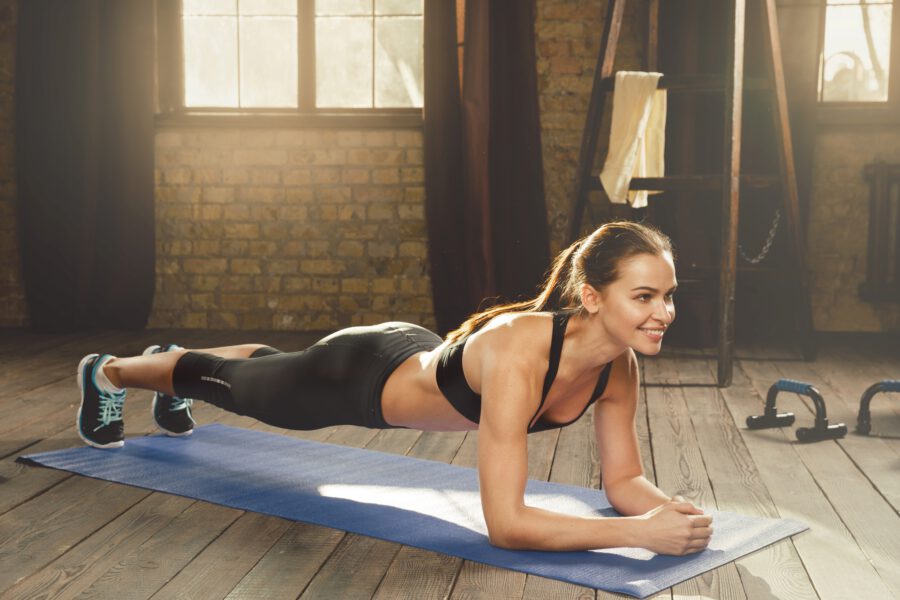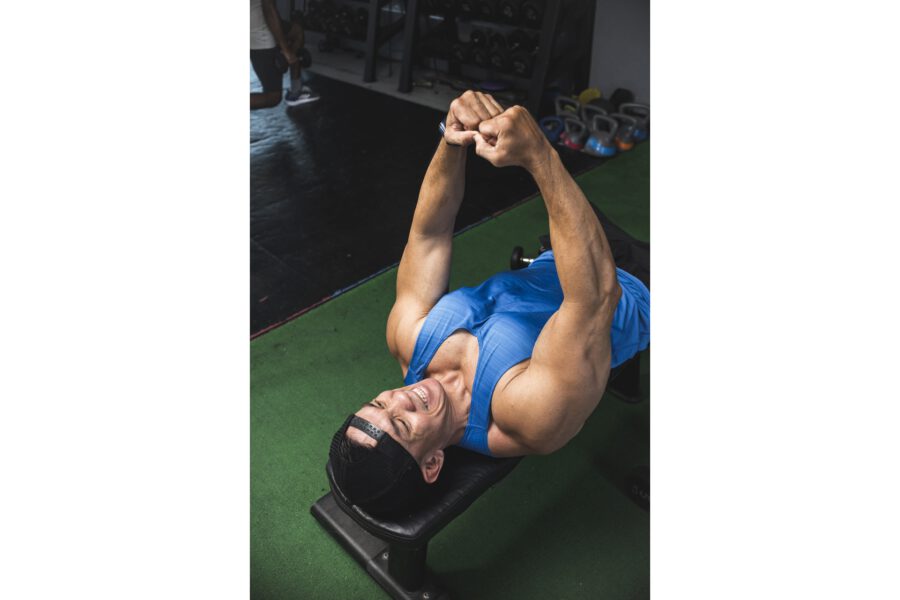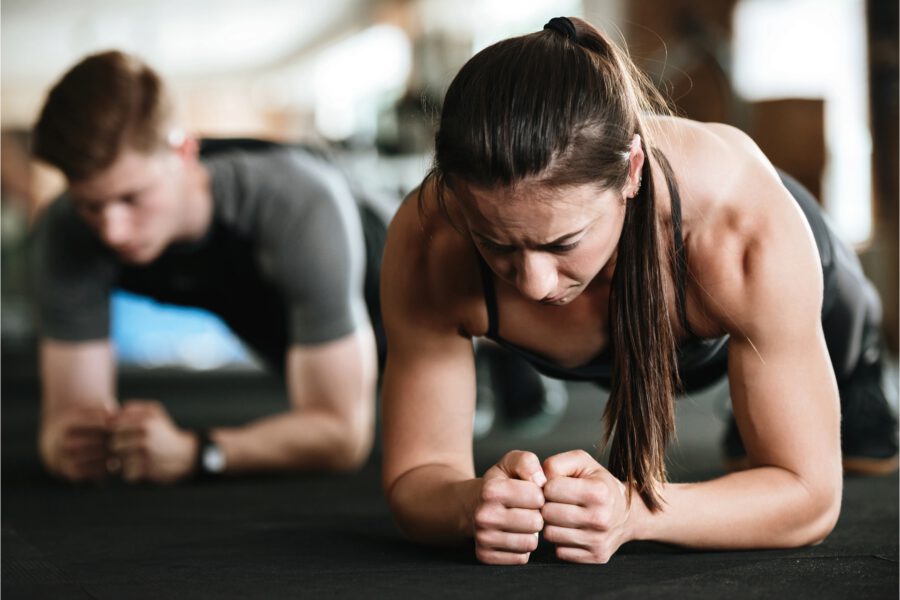Dynamic vs. Isometric Exercise: Which is Best?
Isometric, or static contraction, exercise had its hey-day in the 1970’s. That’s when pieces of home workout equipment like The Bull-Worker were all the rage. But then, along came the gym movement and, suddenly, isometric exercise was old hat. It was now all about exercising a muscle through its full range of motion. But have we thrown out the baby with the bath-water when it comes to static contraction training?
Let’s investigate.
Isometrics are exercises that are done without changing the length of the working muscle. In other words, you stay in a static position during the entire working set. Because your body is contracting against an immovable object ( the wall, the floor, etc), the muscles tenses, but it does not change length.
The opposite of isometric exercise is isotonic contraction, which occurs when you shorten the distance between two joints, such as when you do a barbell curl.
An example of an isometric exercise for the chest is pectoral muscle contraction. It involves grasping your hands together in front of your chest and pressing them together. There is no movement through the shoulder joint so the pectorals experience static muscle tension. There is no range of motion and no reps. Instead the muscle tension is held for a set length of time.
An immediate problem with this type of training is that, when you are pushing against your own opposing force, or against an immovable object, there is no way of knowing how much force is being used. Therefore, there is no consistency between workouts.
You can also do isometric exercises with free weights. You could, for example, hold a pair of 5-pound dumbbells out to your sides with your arms straight for a 30-second count.
A popular example of an isometric exercise is the plank where you are contracting your core without any movement.
Isometric exercise may be beneficial for people who are recovering from injury. If the injury limits mobility, then isometric exercise may allow you to strengthen the muscle at a specific point. From a functional point of view, however, it is far better to move the muscle through its full range of movement. Doing so will increase the strength of the muscle through its full range of motion. In contrast, when you do an isometric exercise it will only strengthen the muscle in the specific position that is being contracted.
When it comes to muscle growth, dynamic movement has also been shown to be far more beneficial than isometric movement. For a muscle to get bigger it needs to be stressed through its full range of motion. That is why there has never been a competitive bodybuilder of note who developed his body as a result of isometric exercise.
The plank is a totally isometric exercise. The abdominals do not get longer or shorter so there is no dynamic muscle contraction at all. As well as contraction through the abs, there is also isometric contraction of the quadriceps and hip flexors. However, because there is no dynamic movement, you are unable to strengthen the muscle through its full range or produce growth in it.
Another problem with the plank exercise is that you are not able to adjust the resistance level. The resistance here is based on your bodyweight. People who are overweight tend to be weaker as a result of a sedentary lifestyle, yet they are being forced to use a greater resistance. Meanwhile, the slimmer person, who may actually be stronger, is able to use a lesser resistance.
The body position that the plank forces you into can also be a problem, especially if you are overweight. Forcing a large person to place a large percentage of their bodyweight onto their elbows can cause the upper arm bone (humerus) to be pushed upward into the shoulder joint. This could cause shoulder joint displacement.
This exercise, despite its popularity, is not very productive. There is, however, one circumstance where the plank can be beneficial. That is if you are a boxer and your training objective is to develop strength mainly in the ‘stiff spine’ position so that you can better handle punches to the stomach.
A far better exercise to develop your abs is the ab crunch, which moves the rectus abdominis through its full range of motion.
It should also be noted, here, that doing planks, or any other exercise for your abs, will not help you to lose stored body fat from this part of your body. That’s because it is impossible to spot reduce body fat from any part of your body. The only way to lose that stored fat is to achieve a negative calorie balance by reducing your calorie intake and exercise to burn calories.
Here’s a workout that includes both:
Isometric exercise does not involve movement through a muscle’s length. It will slightly increase the strength of a muscle in the specific position that it is held. In order to achieve strength through its full range, you would have to hold the contraction at multiple points throughout the range of motion, which is impractical.
The inability of isometric exercise to progressively increase the resistance is another drawback that prevents it from being an effective muscle or strength builder. Isometrics can be beneficial for people who have limited joint mobility and can only exercise through a limited range. Its ability to strengthen a specific muscle position also makes it useful for boxers and others who want to strengthen a muscle in a certain position. Research also shows that isometric contraction preferentially activates slow twitch muscle fibers, which may improve muscular endurance.
Dynamic exercises move your muscles through their full range of motion. This has been shown to be the most effective way to train your muscles for strength and growth improvement. As a result, your workouts should be built around dynamic exercises, following a set and rep scheme.



